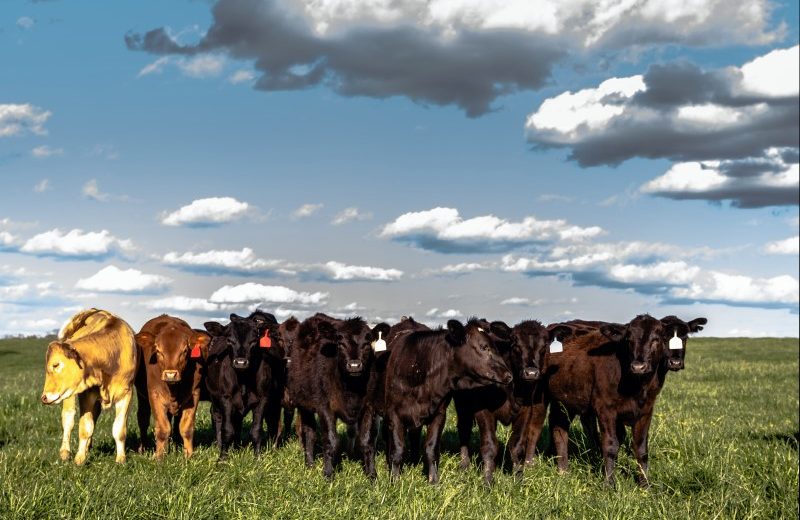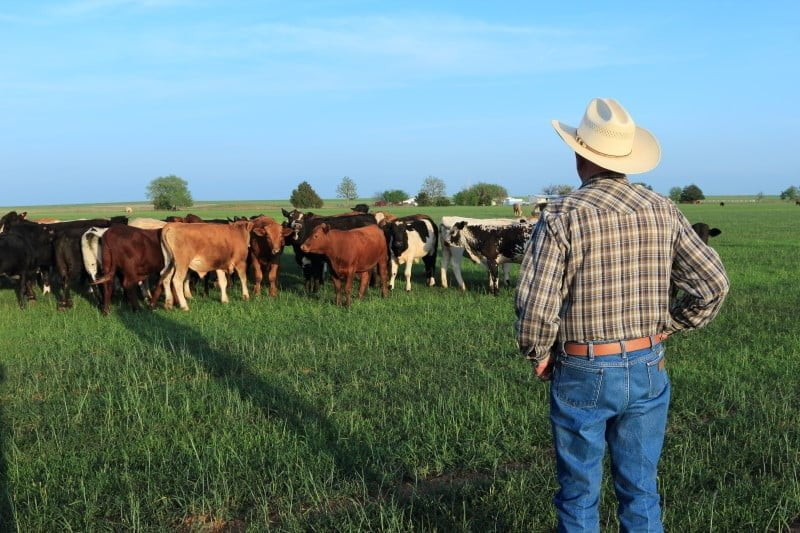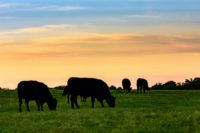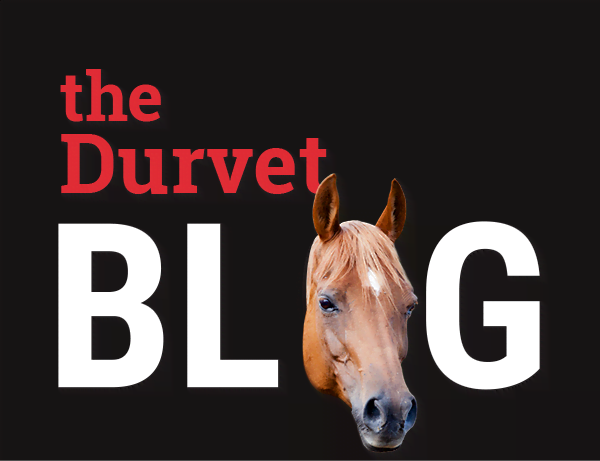
Handling livestock, whether to provide routine care or for treatment of sickness, is a common and often unavoidable part of livestock production. However, there are instances where handling can be avoided, and it is important to be aware of the performance effects that livestock handling may have.
Why low stress and non-handling matters
There’s plenty of evidence to suggest that cows are affected by the stress of handling, and this stress can greatly impact growth, health and reproduction and, ultimately, your bottom line.
Conception rates may be lowered
The first 60 days after breeding are particularly critical for maintaining pregnancy. Research has shown that stress during the first 60 days of pregnancy may reduce pregnancy rates 6 to 12 percent.[1] And handling heifers 10 to 15 days after breeding reduces pregnancy rates by 6 percent compared with leaving heifers in the pasture.[2]
Immune function may be suppressed, resulting in greater chance for respiratory disease
Stress compromises immune function. Research shows that added stress on livestock can lead to greater incidence of and greater severity of respiratory infections.[3]
Higher risk of lameness
Poor handling or stressful handling may result in increased lameness. In a 2014 survey of feedyard managers, nutritionists and veterinarians, cattle handling after arrival was the primary cause of non-infectious lameness.[4] The cost to treat lameness is estimated at $10.50 per head.[5]
Reduced efficiency
Cow-calf operations likely realize a cost of more than $4.00 per head to handle cattle. This figure can vary greatly depending on the operation. Improved cattle handling alleviates unnecessary stress to the animal while allowing the producer to move cattle more efficiently and effectively.
The benefits of low-stress handling have also been documented, ranging from improved animal welfare to reduced injuries.
Less chance of injury
Stressed animals are not only difficult, but can also be dangerous to handle, therefore increasing the likelihood of injury to either the animals or the handlers. In fact, animal contact is generally ranked as the first or second-leading cause of injuries on agricultural operations.[6] Between 2003 and 2007, there were 108 reported fatalities in the United States that involved cattle.[7]
Improved animal welfare
As consumer demand for improved animal welfare increases, the need for non-handling methods of treating livestock is becoming increasingly important.
Enhanced quality of life
Ranchers will also find that if they can minimize the stress on their livestock there will be less stress on the handlers as well. This is because cattle are much easier to handle when they are comfortable and relaxed.
Tips for adopting low-stress or non-handling techniques
 With all of this in mind, any methods that can be incorporated to reduce the risk of injury or stress on livestock should be considered. Some common best practices when handling cattle include:
With all of this in mind, any methods that can be incorporated to reduce the risk of injury or stress on livestock should be considered. Some common best practices when handling cattle include:
- Understand behavior—A thorough understanding of an animal’s behavior is a good first step towards developing an effective method of handling livestock.
- Slow and calm—A good livestock handler is always cool and patient. The golden rule of low-stress handling is slow and quiet; resulting in calmer animals.
- Consistency—Try to use low-stress handling methods every time you work with your animals.
- Begin early—Start with low-stress handling from birth and throughout the animal’s life. This sets a good working foundation for both the animal and the rancher.
Ensuring the health of your cattle in a non-handling or low-stress production system
Health problems can also lead to stressed cattle. In addition to infectious disease, a common health issue facing today’s cattle are internal parasites. The largest effect that internal parasites have on beef cattle production is a reduction in feed intake, resulting in less consumption of energy, protein, vitamins and minerals.
Reduced nutrient intake and absorption is especially detrimental in high-stress cattle because it contributes to their inability to respond to a microbial disease challenge. Therefore, an effective parasite control program is a cornerstone of herd health.
The good news is that ranchers have several deworming options without having to handle the cattle.
Safe-Guard® (fenbendazole), for example, offers plenty of non-handling formulations including blocks, pellets, free-choice-mineral and range cubes.
It’s safe and proven and goes straight to the gut, killing worms where they live, ultimately preventing pasture contamination. With Safe-Guard®, ranchers can use a convenient, non-handling method while properly deworming their cattle on the pasture at the right time in the worm life cycle.
A conversation with your veterinarian can help you plan and implement a program that provides the best parasite control over the long term with minimal disruption to the cattle.
Low-stress handling just makes sense
From cow-calf operations and backgrounding programs to feed yard management practices, ensuring that animals are well-cared-for and handled in a low-stress manner not only makes good business sense, it’s also the right thing to do. And, by adopting a reduced handling approach the easier it will be on the cattle, and on you.
Did you know?
Every animal responds to stressful situations differently.
Naturally calm animals, when handled in a low-stress manner, may show no negative effects in terms of growth, health, or reproduction.
Animals with a more excitable temperament, however, may be unable to cope with the change in environment and may become stressed. In turn, this negatively affects growth, health and reproduction.
Consult your local veterinarian for assistance in the diagnosis, treatment and control of parasitism.
Safe-Guard EN-PRO-AL Molasses Block: RESIDUE WARNING: Cattle must not be slaughtered within 11 days following last treatment. A withdrawal period has not been established for this product in pre-ruminating calves. Do not use in calves to be processed for veal.
Safe-Guard Protein Block: RESIDUE WARNING: Cattle must not be slaughtered within 16 days following last treatment. A withdrawal period has not been established for this product in pre-ruminating calves. Do not use in calves to be processed for veal.
Safe-Guard mineral, feed through products and liquid feed: RESIDUE WARNING: Cattle must not be slaughtered within 13 days following last treatment. For dairy cattle, the milk discard time is zero hours. A withdrawal period has not been established for this product in pre-ruminating calves. Do not use in calves to be processed for veal.![]()
Copyright © 2017 Intervet Inc., d/b/a Merck Animal Health, a subsidiary of Merck & Co., Inc.
[1] Fields, Sarah, and George Perry. 2007. Effects of shipping and heat stress on embryonic mortality in cattle. South Dakota State University Cooperative Extension Service ExEx 2063.
[2] Geary, T. W., R. P. Ansotegui, M. D. MacNeil, A. J. Roberts, and R. C. Waterman. 2010. Effects of flunixin meglumine on pregnancy establishment in beef cattle. J. Anim. Sci. 88:943-949.
[3] Hodgson, P. D. 2005. Effect of stress on viral-bacterial synergy in bovine respiratory disease. Comp. Funct. Genomics. 6:244-250.
[4] Terrell, S. P., D. U. Thomson, C. D. Reinhardt, M. D. Apley, C. K. Larson, and K. R. Stackhouse-Lawson. 2014. Perception of lameness management, education, and effects on animal welfare of feedlot cattle by consulting nutritionists, veterinarians, and feedlot managers. Bovine Practitioner. 48:53-60.
[5] Schwartzkopg-Genswein, K. S., E. Janzen, M. Jelinski, C. Dorin, K. Orsel, E. Pajor, J. Shearer, S. Milman, H. Coetzee, D. Thomson, L.Demmans, D. Moya, and S. Marti. 2014. Occurrence, characterization, and risk factors associated with lameness within Alberta feedlots: preliminary results. In Proc. 4th International Symposium on Beef Cattle Welfare.
[6] Langley, R. and W. Morrow. 2010. Livestock handling-minimizing worker injuries. J. Agromedicine. 15:226-235.
[7] MMWR. 2009. Morbidity and mortality weekly report. 58:800-804.
Brought to you by Merck Animal Health

 BACK TO MAIN BLOG
BACK TO MAIN BLOG 
Comment